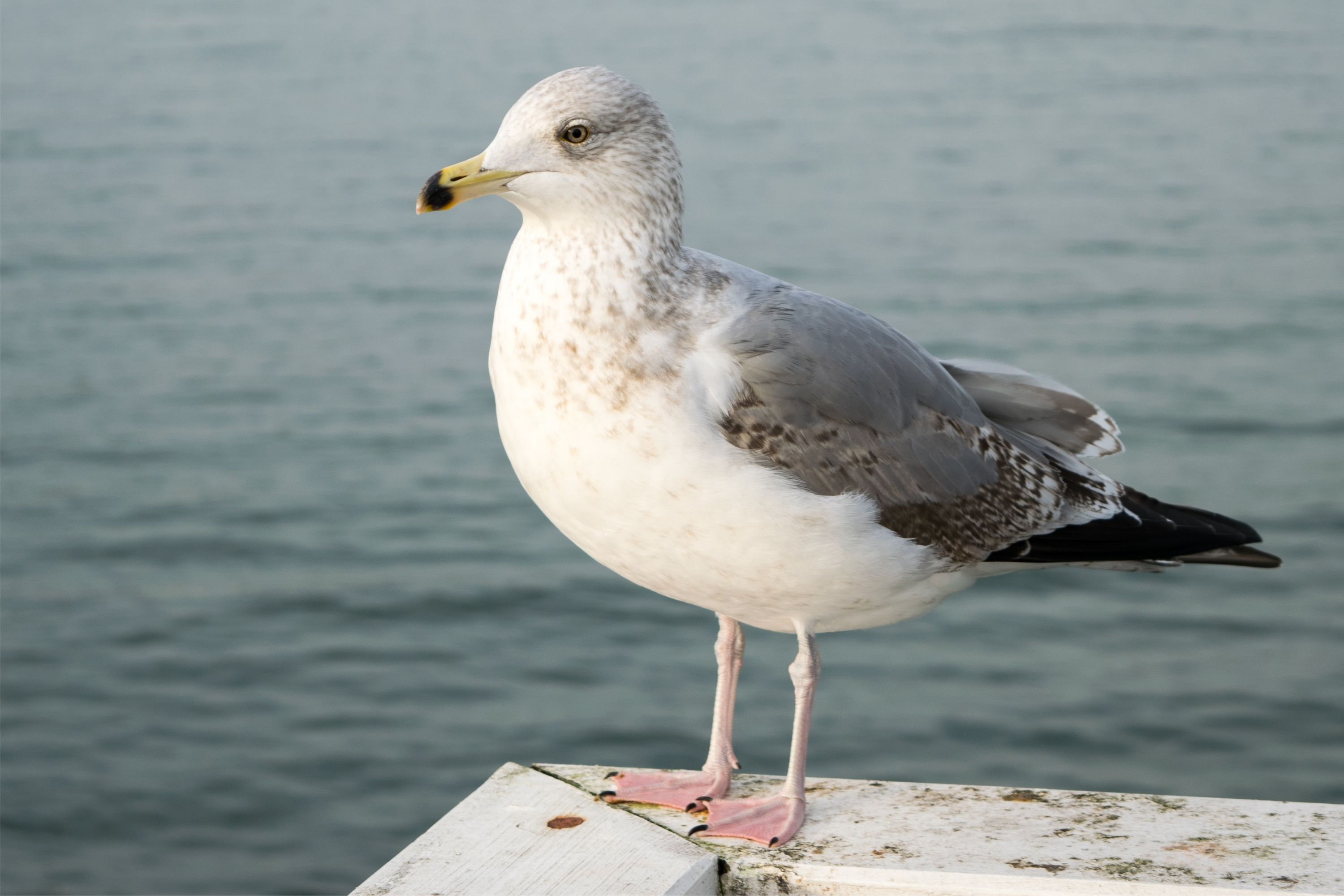Great black-backed gull
(Larus marinus)

Description
Larus marinus, commonly known as the Great Black-backed Gull, is a large gull species that belongs to the family Laridae. These gulls are considered the largest gulls in the world, and their distinctive black-back and yellow bill make them easily recognizable. In this article, we will delve into the various aspects of the Great Black-backed Gull, including its physical characteristics, habitat, behavior, and breeding habits. Physical Characteristics: The Great Black-backed Gull is an impressive bird, with a wingspan that can reach up to 1.7 meters (5.5 feet) and a body length of up to 76 cm (30 inches). These gulls are sexually dimorphic, with males being larger than females. The average weight of males is around 2.3 kg (5 pounds), while females weigh around 1.7 kg (3.75 pounds). The plumage of the Great Black-backed Gull is mostly white, with black feathers on the back, wings, and tail. Juvenile birds have mottled brown feathers on their backs, while adult birds have a solid black coloration. The legs are pinkish and the eyes are yellow, and the bill is yellow with a red spot on the lower mandible. Habitat: Great Black-backed Gulls are found in coastal areas throughout the North Atlantic Ocean, from North America to Europe. They are also found along the shores of the Arctic Ocean and in some inland freshwater habitats, such as lakes and rivers. These gulls are highly adaptable and can be found in a variety of habitats, including rocky and sandy beaches, marshes, estuaries, and offshore islands. They are also commonly found near human settlements, such as fishing ports, dumpsites, and urban areas. Behavior: Great Black-backed Gulls are opportunistic predators and scavengers, feeding on a wide range of prey, including fish, crabs, mollusks, small mammals, and even other birds. They are also known to scavenge on garbage and carrion, and have been observed stealing food from other birds. These gulls are highly territorial during the breeding season, and will aggressively defend their nesting sites from other birds and predators. They are also known for their loud and raucous calls, which they use to communicate with other birds and to establish their dominance. Breeding Habits: Great Black-backed Gulls are monogamous, forming long-term pair bonds that can last for several breeding seasons. Breeding typically occurs between March and July, with pairs building large nests on the ground or on rocky ledges. The female lays 2-3 eggs, which are incubated by both parents for around 28-30 days. The chicks are born covered in downy feathers and are fed regurgitated food by both parents. They fledge after around 50-60 days. Conservation Status: Great Black-backed Gulls are currently classified as a species of Least Concern by the International Union for Conservation of Nature (IUCN). While they are widespread and abundant throughout their range, they may face threats from habitat loss and disturbance, as well as from pollution and human activities. In conclusion, the Great Black-backed Gull is an impressive and adaptable bird, with a unique set of physical and behavioral characteristics that make it a fascinating species to study. Understanding the habitat, behavior, and breeding habits of this bird can help us to better appreciate its ecological role and to develop conservation strategies to protect it and its habitat for future generations.
Taxonomic tree:







